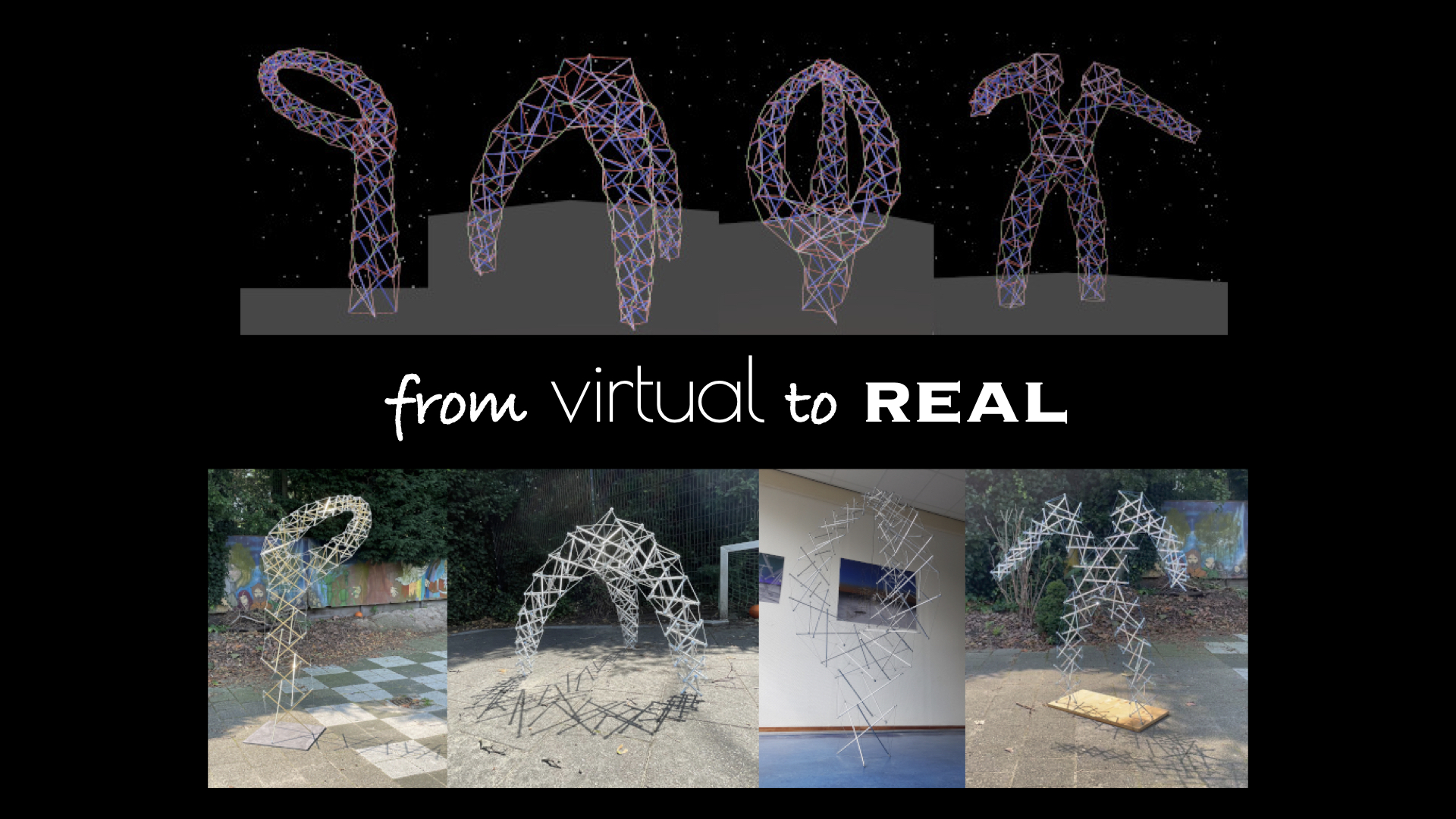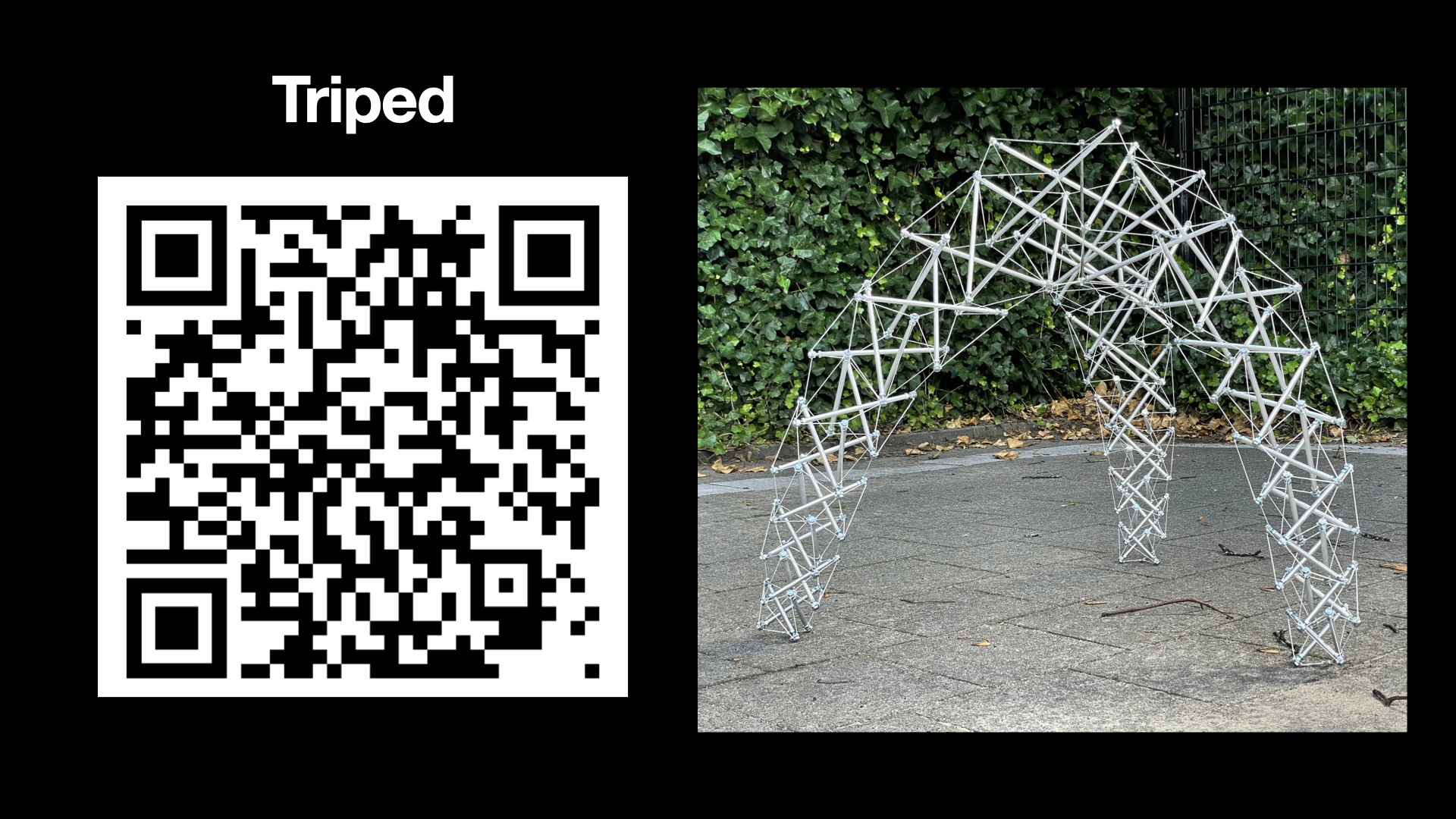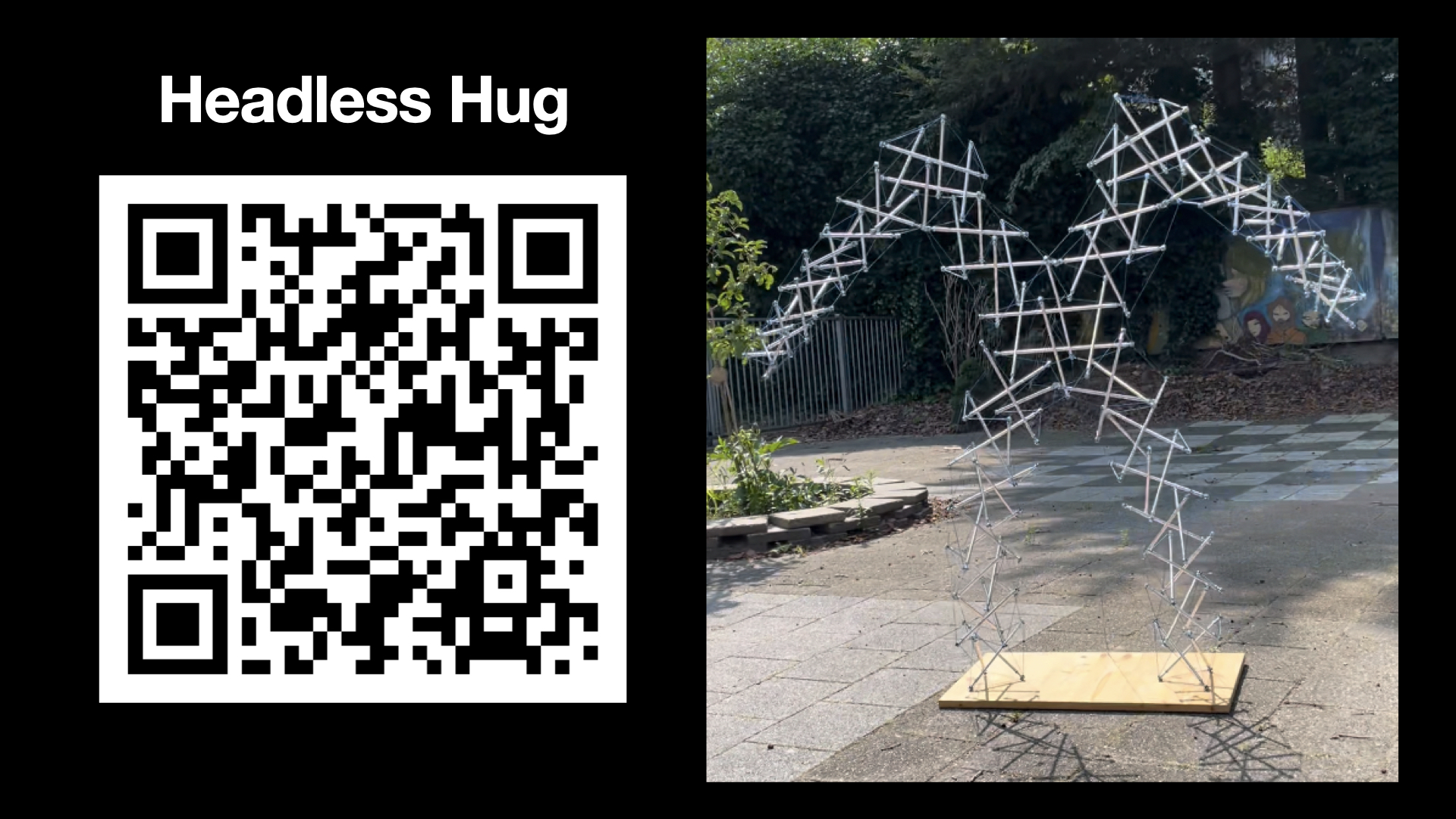PretensT
Tensegrity is a special kind of structure made of push and pull.
Project maintained by elastic-interval Hosted on GitHub Pages — Theme by mattgraham
Open Source Tensegrity
Our latest creation stood ten meters tall at the Wildeburg festival last summer.

You can see open source the software model that was used to create it.
A Little about Art
This all began as a software project, and I am at heart a software developer (sorry, so this is going to get weird). When I think of art, I think of what Joscha Bach describes.
Rather than seeing these limitations as obstacles to overcome, the artist develops an aesthetic appreciation for the very thing that creates tension between intention and outcome. The "loss function" becomes not just a tool for improvement, but a source of creative discovery and emotional resonance.
Background: Only Push and Pull
In the 1960s Ken Snelson first explored what could be done (artistically) with structures that were based on using only continuous tension and floating compression, and Bucky Fuller elaborated the philosophical implications and called it tensegrity. Tom Flemons showed us what it could mean in terms of biology.
The Pretenst project starts in the abstract with a home grown software model (minimal physics engine) called elastic interval geometry, and extends the exploration into what can be designed and ultimately built in physical form when you work in terms of only push and pull forces.

Click on the images below or scan the QR with your smart phone to see how the designs emerge.
Projects:
2024-07-23: "Bouncy Wooden Sphere": what you can do with a discarded bed2024-04-23: "Twisted Torque": tied into a permanent twist
2023-03-27: "Easy 30-Push Sphere": one simple element
2022-10-05: "Glass and LED": going big and colorful
2022-09-29: "Fascia": dancing with tensegrity
2022-08-30: "Mitosis": the four-three-two tensegrity
2022-08-04: "Push Bolts for the People": finalizing design and getting it out there
2022-06-22: "Head to Head Push Bolt": M5 and M6 bolts symbiosis
2022-05-30: "Hiding Knots": bump up the aesthetics
2022-05-25: "Innovation with 3D Printer": the push bolt
2021-12-02: "Headless Hug": breaking a rule for the sake of symmetry
2021-10-28: "Rebuilding the Halo": finally got it right
2021-10-20: "Convergence": growing and reconnecting
2021-07-27: "120-Strut Brass Bubble": taking the next step up in complexity
2021-05-26: "30-Strut Brass Bubble": bouncing spherical tensegrity
2021-04-08: "Bow Tie Tensegrity": better bend resistance
2021-03-29: "Six Twist Essential": what if more hands could see?!
2021-01-25: "Minimal Tensegrity": no more tension lines than absolutely necessary
2021-01-18: "Degrees of Freedom": first adjustable hybrid tensegrity
2021-01-11: "Fractal Experiment": a tensegrity of tensegrities
2020-12-09: "Axial Tension": pretensing what is already pretenst
2020-11-02: "Halo by Crane - Part 2": the strengthening
2020-10-26: "Halo by Crane - Part 1": assembly complete but strength lacking
2020-10-12: "Brass and Tulips": a tight and strong tensegrity tower
2020-08-10: "Prefab Tension Tower": the tower of eight twists
2020-07-27: "Elastic Bubble": building with elastic ease
2020-07-13: "The Twist Sisters": left-handed and right-handed
2020-07-06: "Radial Tension": Pulling towards the middle
2020-06-22: "Diamond of Tension": Four pulls for every push
2020-06-15: "Prefab Tension": Separating compression from tension



